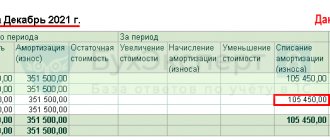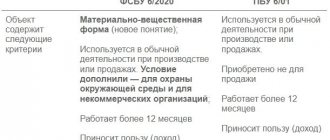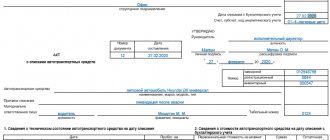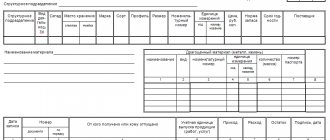Accounting in agriculture: general principles
For agricultural enterprises, all general principles and rules of economics and accounting in force in the Russian Federation are applicable. This:
- Federal Law “On Accounting” dated December 6, 2011 No. 402-FZ;
- chart of accounts approved by order of the Ministry of Finance of Russia dated October 31, 2000 No. 94n;
- complex of PBU and FSBU;
- other regulatory documents governing accounting in the Russian Federation.
Features of reflecting agricultural operations in accounting are associated with their special characteristics:
- seasonality;
- long production cycles;
- a large share of turnover within the enterprise, etc.
Accounting tasks in agriculture
According to the laws of the Russian Federation, accounting at agricultural enterprises helps solve the following problems: (click to expand)
- Creation of a complete and true picture of the operation of the farm, the state of its property, and the accounting reports that users need.
- Compliance with the laws of the Russian Federation in the course of business management, use of property, material, monetary, labor funds and fulfillment of obligations in accordance with established standards.
- Preventing negative phenomena in production and in managing the organization’s financial resources.
- Identification and activation of internal reserves necessary for financial comfort.
- Assessment of the use of found reserves after the fact.
Administrative and managerial personnel perform the following functions at agricultural enterprises:
| Job title | Responsibilities |
| Supervisor | Compliance with laws; Organization of accounting service; Control over the operation of the enterprise. |
| Chief Accountant | Development of accounting policies; Accounting; Accounting management; Preparation and presentation of reports. |
Land as the main means of production in agriculture
Land holds a special place in agriculture. This is the main object of fixed assets and the main subject of labor application. At the same time, land has significant differences from other means of production:
- does not wear out or depreciate;
- when used correctly, it can improve its properties (for example, in terms of increasing fertility);
- is not a human-made object;
- the land plot cannot be manufactured, replaced, or moved.
All this leads to the peculiarities of land accounting:
- Land plots can be used by an enterprise on the right of ownership, use or lease. Accordingly, accounting should be conducted in such a way that analytics on this aspect are provided both on the balance sheet and on off-balance sheet accounts.
- When registering the land, it is valued:
- by purchase costs;
- the value of the property exchanged for the land plot (in case of exchange);
- market value on the date of capitalization (if received free of charge);
- agreement of the parties (with a contribution to the management company).
If none of the above methods are suitable, the land is valued at the standard price.
IMPORTANT! The definition of the standard price of land is given in Art. 25 of the Law of the Russian Federation “On Payment for Land” dated October 11, 1991 No. 1738-I. The standard price is a value that is determined based on the potential income from a specific land plot over the estimated payback period.
- Land analytics is provided in terms of at least:
- existing agricultural land (they, in turn, are divided by use: arable land, perennial crops (orchards, vineyards), pastures, hayfields, etc.);
- fallow lands (resting to restore fertility);
- areas of forests and tree and shrub plantings (protective strips for other land use objects);
- lands under water and at the stage of reclamation;
- lands under roads, runs and clearings;
- lands for public buildings;
- other lands depending on their purpose and use.
In relation to agricultural land plots, the land tax rate is set by municipalities. It cannot exceed 0.3% (clause 1, clause 1, article 394 of the Tax Code of the Russian Federation). The rate is significantly lower than for other categories of land. Is the reduced rate maintained if the land is leased? What if the land is idle? Find out the expert opinion of ConsultantPlus by getting trial access to the system for free.
The formula for calculating land tax can be found here.
- Accounting is carried out using standard accounts and postings for non-current assets. For example, the acquisition of a plot of land into ownership is reflected as follows:
- Dt 08 Kt 60, 76, 75, 98 - ownership of land acquired;
- Dt 01 Kt 08 - the land was accepted for balance according to the act.
NOTE! For operations with land, there are separate forms of primary registration, approved by order of the Ministry of Agriculture of the Russian Federation dated May 16, 2003 No. 750. For example, for the capitalization of agricultural land (land), form 401-APK is used.
Features of production and accounting features
Agricultural production is not limited to a certain size or form of ownership. Producers of agricultural products can be small peasant farms and large agro-industrial complexes. At the same time, it is possible to highlight the general features of the production process and consider them in connection with accounting.
The basis of agriculture, the most important means of production in the agricultural sector, are land plots. Land is a fixed asset and is the main subject to which labor is directed. However, this OS has features:
- is not subject to wear and tear;
- in itself is not the result of human labor;
- the site cannot physically be moved anywhere;
- The land fund is limited and unique; it cannot be replaced by other, progressive means of production, or modernized, like other fixed assets.
However, it is clear that the boundaries of land plots can be changed, and material costs can improve its quality and production efficiency.
Synthetic accounting of land is carried out using accounts 01, 08, as well as for accounting for other fixed assets. Further, subaccounts and analytical accounts are used in accordance with the specifics of the agricultural firm. Lands used for production are divided into arable lands, pastures occupied by perennial plantings (for example, gardens), hay meadows, etc. Pairs are distinguished - lands cleared of plantings in order to increase fertility. Separately, areas under buildings and structures and the adjacent territory, forest plantations, and other areas owned by the agricultural company are taken into account.
Separately, owned and leased lands are distinguished. The cost is usually determined by the acquisition costs, but under certain conditions other options may be reflected in the accounting, for example, the market price for a gratuitous transfer.
By the way! If the land belongs to agricultural plots, a reduced land tax rate is applied, no more than 0.3% (Article 394, paragraph 1-1 of the Tax Code of the Russian Federation).
Seasonality of production and cycles
Unlike most industrial production, the agricultural industry depends on seasonal and climatic conditions. During certain periods of the year, production either stops or decreases, and farmers’ incomes also decrease. There are costs involved (salaries and deductions for personnel, purchase of materials, equipment). Part of the costs, for example, for equipment repairs, is reflected in account 97, since these are expenses of this reporting period related to future periods. Other costs, depending on their type, are reflected in the usual way (10, 11, 08, 26, etc.).
You can depreciate fixed assets by season of work, and not by year (PBU 6/01 clause 19), however, this rule applies only to accounting records; it cannot be used in NU.
The cycles of growing livestock and crop products do not coincide with the calendar reporting year. In the current year, accounting may include costs from previous years, investments this year to obtain products of a future period, costs incurred in the same year when the products were received. As a rule, separate accounting is organized on production accounts. During the year, products are accounted for at planned cost, and at the end of the year the actual cost is determined and adjustment entries are made. Adjustments are applied to sales (90) or to finished goods (40, 43), depending on whether the products are sold or not; and nuances of working wiring.
Internal movements
Products can be used not only externally, but also within the same production or another production within the framework of the agricultural company. Part of the milk is used to feed calves, vegetables are used to feed young animals (animals being raised and fattened), grain is partially selected for seeds for the next sowing, etc. In accounting, this is reflected by internal entries in the accounts (account 20 - for crop and livestock subaccounts, 10 - in the context of subaccounts), by writing off finished products from the credit (accounts 40, 43) to the debit of the corresponding production account.
Industry differences
The diversity of agricultural activities is reflected in the accounting and use of accounting accounts. Example: an agricultural company is engaged in growing grain. To provide the fields with organic fertilizers and for the rational use of grains, a poultry farm operates. The main production here is the cultivation of grain (account 20), and the poultry farm will be an auxiliary production (account 23). If a firm is engaged in raising piglets and producing barley for feed, the pig-breeding activity will be the main production, and the feed production will be an auxiliary production.
How differences in agricultural industries affect accounting in them
Industry differences lead to the fact that the classification of the same types of activities for accounting purposes in agriculture may differ.
For example, for an enterprise producing compound feed, sowing and harvesting the corresponding crops, hay production will be the main activities. And for an enterprise specializing in fattening cattle, the same production of hay on existing hayfields will become an auxiliary production.
Accordingly, accounting will be provided in different ways:
- the feed manufacturer will take into account its costs for harvesting hay on account 20;
- and the owner of a meat farm - on account 23;
- Accounting for milk in agriculture is carried out on sub-accounts opened to accounts 20 “Milk Processing” and 10 “Milk” as a raw material.
Programs for optimizing accounting in the agro-industrial complex
There are enough programs on the market to automate the accounting of business processes, but there are very few industry-specific ones. This is especially true for the agricultural sector. By and large, there is one worthy solution, this is “1C: Accounting for an agricultural enterprise.”
The program is implemented on the 1C:Enterprise 8 platform. It is a multifunctional industry solution for automating both accounting and tax accounting. Works with all taxation systems available in our country. The organization of accounting itself is carried out in strict accordance with the legislation of the Russian Federation.
The program outperforms other similar ones in terms of price-quality ratio. It can be effectively used at a variety of agricultural enterprises: not only by producers of agricultural products, but also by companies involved in, in addition to their production, also processing.
The software solution provides a wide range of tools for the following categories of company employees:
- Management;
- Chief accountant for biological assets;
- Accountant for real estate and land leases;
- Accountant for transport and working equipment;
- Accountant for salaries and subordinates.
Also, the program will be of great help to livestock specialists and agronomists. For the first, it will, among other things, help in taking into account the mass of working and productive livestock, and for the second, in distributing sown areas among divisions and various crops.
It should also be noted that there are many courses for training in working with 1C:Account. agricultural enterprise”, there are quite a few articles on the Internet, and a lot of reference literature has been published.
The nuances of accounting for seasonal production
Due to climatic conditions, the activities of most agricultural enterprises are seasonal. This leads to the fact that the enterprise has periods of activity and downtime. And if everything is more or less clear with the lack of income during the off-season, then what about expenses?
During the downtime period, it is important to correctly classify expense items for accounting purposes:
- on assets;
- expenses related to future periods;
- current expenses.
As can be seen from this classification, it is assumed that during the idle period the agricultural enterprise has no direct costs associated with the sale of products, since there is no sales. Note that direct costs in agriculture include:
- direct material costs for the production process;
- expenses for remuneration of employees employed in the main production (including contributions for their compulsory insurance);
- depreciation of fixed assets used in the main production.
Thus, all expenses incurred during the shutdown period to support operations in the next season are accounted for either as assets or as expenses incurred in the current period but related to future ones.
The exception is permanent indirect costs, such as administration salaries. They are expensed monthly.
Example 1
Kombikorm LLC, operating in central Russia, incurred the following expenses in February 2022:
- purchased a new combine;
- repaired 2 existing combines using our own resources;
- purchased seeds of a new variety of fodder corn;
- paid salaries to the manager and accountant.
The following entries were made in the LLC accounting:
- Dt 08 Kt 60 - the purchase of a new combine is reflected;
- Dt 97 Kt 60 - spare parts and materials were purchased for the repair of 2 old combines;
- Dt 97 Kt 70 - salaries were accrued to the technicians who carried out the repairs;
- Dt 97 Kt 69 - insurance premiums are charged on amounts related to equipment repair;
- Dt 10 Kt 60 - planting material (seeds) has been capitalized;
- Dt 26 Kt 70, 69 - administration salaries and insurance premiums are accrued.
Regarding wages, it should be borne in mind that labor relations with seasonal workers also have their own specifics. In our article we will not dwell in detail on seasonal workers.
You can read more in the article “Drawing up a fixed-term employment contract - sample.”
To conclude the topic of seasonality, we cannot help but touch upon the calculation of depreciation in agriculture.
Until the end of 2022, for accounting purposes, depreciation of fixed assets used seasonally had to be accrued during the season. That is, the annual norm had to be invested in the season (clause 19 of PBU 6/01, approved by order of the Ministry of Finance of Russia dated March 30, 2001 No. 26n). For example, if the activity was carried out for 5 months a year, then for each month of the season it was necessary to write off 1/5 of the annual depreciation rate. But in FAS 6/2020 “Fixed Assets”, in force since 2022, there is no rule found in paragraph 19 of PBU 6/01, according to which for fixed assets used in organizations with a seasonal nature of production, the annual amount of depreciation charges was accrued evenly in during the period of operation of the organization in the reporting year. Since FAS 6/2020 “Fixed Assets”, in force since 2022, does not regulate the frequency of depreciation, the organization has the right to choose the most suitable option for writing off depreciation.
Find out how to correctly calculate depreciation on fixed assets according to the new rules of FAS 6/2020 “Fixed Assets” in ConsultantPlus. If you do not have access to the K+ system, get a trial demo access for free.
IMPORTANT! For tax accounting purposes, the situation with depreciation of fixed assets is different. Clause 3 Art. 256 of the Tax Code of the Russian Federation does not provide for the exclusion of fixed assets from depreciable property due to their seasonal use. Just as the Tax Code of the Russian Federation does not provide for seasonal depreciation using the method used in accounting. For tax purposes, depreciation in agriculture is calculated in accordance with the Tax Code of the Russian Federation, which leads to the formation of temporary tax differences during seasonal work.
Since 2022, PBU 6/01 has lost force. Instead, FSBU 6/2020 “Fixed Assets” and FSBU 26/2020 “Capital Investments” apply. ConsultantPlus experts explained in detail how to correctly take into account changes in the initial cost of an operating system when applying new standards. Get free demo access to K+ and go to the Ready Solution to find out all the details of this procedure.
Seasonality
The seasonal nature creates periods of activity and downtime for agricultural enterprises. During periods of downtime, production is usually stopped or reduced depending on the type of activity.
If an enterprise experiences a period of downtime, that is, it does not produce or sell products, then there are no income and direct costs. However, agricultural organizations incur other expenses - wages to employees, updating equipment, purchasing materials, etc.
To correctly reflect such costs, it is important to correctly classify them by item:
- Future expenses;
- current expenses;
- asset-related expenses.
When accounting, 10, 11, 08, 26, 97 accounts are used.
In addition, organizations have ongoing indirect costs paid monthly, such as salaries for administrative staff.
Seasonality also affects depreciation of fixed assets. In accordance with paragraph 42 of the methodological recommendations for accounting for fixed assets, the annual amount of depreciation is charged to expenses in accordance with the period of operation in the year of the fixed assets. That is, if the activity is 4 months a year, then only ⅓ of the annual norm will be written off. The amount of depreciation will be distributed evenly over 4 months (paragraph 6, clause 19 of PBU 6/01).
Separation by production cycles
Another feature of agriculture is that the production cycle often does not coincide with the reporting year. An example is the cultivation of winter crops, which are sown in the fall of one year and harvested in the spring or summer of the next.
As a result, in the accounting of agricultural organizations, it is accepted to differentiate production costs by periods (years):
- costs of past periods (years) for the current harvest;
- expenses of the current period for the future harvest;
- expenses of the current period for the harvest in it.
To organize the distribution of direct costs, analytical subaccounts are opened on account 20. For example, 20/production of the reporting year and 20/production of the next year.
An additional nuance exists for distributed expenses. They are independent intermediate objects of cost accounting (see paragraph 44 of the methodological recommendations of the Ministry of Agriculture of Russia, approved by Order of the Ministry of Agriculture dated 06.06.2003 No. 792). That is, during the year, these expenses are taken into account in separate analytical accounts, and at the end they are distributed to cost analytics by year - for the harvest of the current year and the future.
Another nuance of cost formation, arising from the biological characteristics of agriculture, is the use of planned and actual costs.
A shifted production cycle is characterized by cost accounting at planned costs during the calendar year. The actual cost is determined once on the last day of the year through a special calculation. Identified deviations between fact and plan include:
- for products already sold in the reporting year - to the account of 90;
- the balance of finished products in warehouses - to account 43.
Example 2
Agronom LLC decided to sow winter wheat in 2022. In addition, the LLC also sows other grain crops. In 2022, it was discovered that frosts had killed about 20% of the winter crop.
In September 2022, the LLC made the following entries: Dt 20 (harvest 2021) Kt 10, 70, 69 - for the amount of direct actual costs for sowing winter crops - 1,000,000 rubles.
In December 2022, the LLC calculated the actual cost for 2022:
- Dt 20 (harvest 2020) Kt 20 (depreciation of fixed assets) - 200,000 rubles. (depreciation of used fixed assets distributed among types of crops for the current year’s harvest is written off);
- Dt 20 (harvest 2021) Kt 20 (depreciation of fixed assets) - 100,000 rubles. (distributed depreciation is written off for next year’s harvest);
- Dt 43 Kt 20 (harvest 2020) - 200,000 rub. (deviations of the fact from the plan are written off to the account of finished products of the current year).
In May 2022:
- Dt 20 (harvest 2021) Kt 10, 60, 70, 69 - 400,000 rub. (the costs of harvesting winter crops are taken into account at the planned cost);
- Dt 43 Kt 20 (harvest 2020) - 1,500,000 (1,000,000 + 100,000 + 400,000) rub. (the current cost of the winter crop harvest in 2019 has been formed);
- Dt 91 Kt 20 (crop loss - 2021) - RUB 300,000. (the loss from the destruction of crops is reflected in the accounting);
- Dt 90 Kt 43 - 1,500,000 rub. (the cost of sold winter crops has been written off).
In December 2022, the LLC will need to complete calculations for the winter crop harvest - 2022:
- Dt 20 (harvest 2021) Kt 20 (depreciation of fixed assets) - 100,000 rubles. (distributed depreciation of fixed assets for the 2022 season was written off);
- Dt 90 Kt 20 (destruction of crops) - 300,000 rubles. (the cost of the sold crop was reversed for the amount of loss from the loss of crops);
- Dt 90 Kt 20 (harvest 2021) - 100,000 rub. (the cost of the sold crop was adjusted by the amount of distributed expenses).
Since crop production in the Russian Federation does not always lead to profit, the state provides financial support to this category of agricultural producers. Subsidies are allocated for specific purposes and must be accounted for separately from other financial flows. How to properly organize such accounting and what nuances to take into account in order to avoid unnecessary taxes and claims from fiscal officials? Get free trial access to the ConsultantPlus system and read the answers to these and other questions in expert advice.
Primary accounting in accounting
Accounting for costs, working and fixed assets, and production in the crop production sector is carried out using primary documentation. It is divided into accounting blocks:
- Labor costs and their payment: accounting and waybills by mode of transport, foremen’s books, orders for transactions, time sheets.
- Subjects of labor: acts of write-off of seed material, use of fertilizers, equipment, limit and intake cards. At the end of the month, the data from the listed documents is included in the movement report] form MX-20a[/anchor]. (old form 265-APK)
- Instruments of labor: calculations of depreciation and statements of its distribution.
- Receipt of products: registers for sending goods from the field, accumulative statements of their receipt, acts of sorting, acceptance and transfer, movement, receipt of products and feed.
Registration of the movement of seeds with primary documents serves to correctly record their sowing. Accounting is designed to provide control over sowing rates. Before this, the chief agronomist develops a scheme for obtaining planting material from storage points to structural units.
Information from groups of papers is processed according to certain criteria in accordance with the approved document flow procedure for accounting objects, types of work and agricultural crops. Cumulative registers are used for this.
On-farm turnover in agriculture
Agricultural enterprises often use the results of a production cycle in the next or parallel production cycle. For example, part of the agricultural crop, which is a finished crop product, can be left as seed material. Some of the vegetables grown for sale can be used as an additive to animal feed during growing and fattening.
Such operations require special reflection in the accounting accounts of on-farm turnover. A part of the cost of the main production or finished product is transferred back to the same production cycle or another main production.
Atypical wiring is as follows:
- Dt 20 (analytics 1) Kt 20 (analytics 2);
- Dt 20 (analytics 2) Kt 43 (analytics 1).
Read more about accounting for intra-farm turnover here.
Analytical accounting in crop production
Analytics of crop production costs has a characteristic difference. First, they are reflected by structural units: teams, workshops, departments, and then grouped by farm.
The objects of analytical cost accounting include:
- Types of crops with identical cultivation methods;
- Types of work in progress;
- Distribution costs;
- Others.
The main register of analytics is the production report of the division f. 83-APK. It includes the following sections: on costs (DT 20.1), on receipt of products (Kt 20.1), on turnover on the account loan. 20.1. It is opened for an annual period for each structural unit.
In section 1, each accounting object is entered in a separate column. The nomenclature of costs is indicated line by line. Costs are allocated according to corresponding accounts. Information is reflected in total and quantitative terms. Figures are recorded from work and cost journals, primary records and accumulation sheets.
Distributed costs are shown as negative values in the report because they correspond to a specific culture. These are the costs of soil irrigation, drainage, and unfinished production upon completion of the process.
To avoid accounting for identical costs twice, amounts with a minus sign are subtracted from the totals of the f. 83-APK horizontally and vertically.
Section 2 reflects the quantity and planned cost of products received during the month and since the beginning of the year. Here the costs of crop destruction are written off.
Section 3 contains monthly turnover according to Kt 20.1. They are entered into form 10-APK (→).
Data from f. 83-APK fall into a similar summary document for the enterprise. Each line and column contains an indicator summed up from all personal accounts of structural units.
Analytics of the production process is divided into harvest costs of adjacent years by type of work and crop.
Costs and products received are taken into account in the account. 20 by article:
- Salary and accruals;
- Seeds for planting;
- Fertilizers: organic and mineral;
- Pest control products;
- Maintenance of fixed assets;
- Works, services;
- Production management procedure;
- Loan transfers;
- Other.
According to Dt 20.1, they show the actual costs of receiving crop products and the balance of unfinished work at the beginning of the reporting interval, according to Kt 20.1 - its output at the planned cost, write-off of differences in calculations at the end of the year and damage from natural disasters.
Results
Accounting in agriculture has a large number of nuances.
Despite the fact that it is maintained using general principles and a general chart of accounts, the accounting procedure for individual items may differ significantly from the procedure in other industries. This is primarily due to the specifics of agricultural activities, which depend on natural biological cycles, climatic conditions and the use of land as the main asset. You can find more complete information on the topic in ConsultantPlus. Free trial access to the system for 2 days.
Calculation difference
The harvest of crop products is received according to the planned cost of primary production and summary documentation.
Actual costs are calculated at the end of the year. To do this, they close costly accounts for auxiliary industries, general business and general production expenses, calculate expenses for dead plants, and distribute costs for land improvement.
Based on the results of the reporting period, 20.1 is closed by writing off the calculation difference.
The cost is calculated by type of crop per 1 c. main and secondary products.
By-products are not calculated. Its cost is determined by standards calculated based on the costs of cleaning, transportation, stacking and other work.
When determining the cost of output, the costs of minor items are deducted from the total costs of cultivation.
The calculation difference is written off as a reversal entry (the plan is greater than the actual) or an additional posting - in case of overspending (the actual is greater than the plan).
Example #2. Accounting and calculation of calculation differences
The annual costs of growing rye amounted to 2,538,700 rubles. 10,418 quintals were received from the harvest. full grain at a standard cost of 203 rubles per centner, as well as 6,040 centners of waste containing 25% of a full-fledged product at 58 rubles per centner and straw for 230,500 rubles.
Actual costs will be: RUB 2,308,200. (2,538,700 – 230,500);
The waste contains 1,510 centners of complete grain (6,040 * 25%);
Total whole grain: 11,928 c (10,418 + 1,510);
Cost 1 c. grains in fact: 212.84 rub. (2,538,700 / 11,928);
Cost 1 c. grain waste amounted to 66.14 rubles.
The calculation difference is determined:
for grain: 102,513.12 rub. ((212.84 – 203) * 10,418);
for grain waste: 49,165.60 rub. ((66.14 – 58) * 6,040).
The actual cost of both types of products is higher than planned, so the cost difference must be taken into account by additional posting:
Dt 10, 43 Kt 20.1 in the amount of 151,678.72 rubles. (102,513.12 + 49,165.60).







